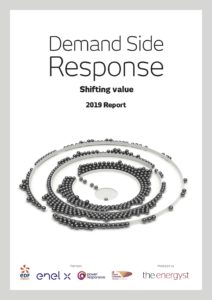 Flexibility is fundamental to SSEN’s strategy, says Stewart Reid, the DNO’s head of future networks. But co-ordination is required to unlock the market.
Flexibility is fundamental to SSEN’s strategy, says Stewart Reid, the DNO’s head of future networks. But co-ordination is required to unlock the market.
Local flexibility can enable network operators to accommodate increasing demand at lower cost, says Reid. However, the challenge DNOs face is finding flexibility at an economic cost in what is a very immature market place.
Over the last 18 months Reid says SSEN has undertaken “enhanced engagement” work in the South East to try and “flush out marginal cost flexibility”. That is, working with local communities and businesses “and bringing in organisations with the right skills to kick start the market in marginal cost flexibility”, says Reid.
Prior to that, it took an OJEU procurement route for constraint management zones (CMZs).
“We found we were just attracting big chunks of expensive equipment like dedicated batteries and generators, and not those within the required geographical areas, and certainly not at a price that could save customers money on the cost of conventional reinforcement” says Reid.
“So if you are procuring flexibility to avoid a new transformer and you end up with a proposition to build a battery that is three times as big as the transformer with half the asset life – that’s not an economic solution,” he explains.
“Yet we know there is lots of marginal cost flexibility out there, or assets in planning for other purposes that could be made flexible. If we engage more effectively, we are more likely to flush out that marginal cost flexibility.”
That led SSEN to create what it calls ‘social CMZs’, a way of placing higher value on buying flexibility locally with broader societal benefits.
It held workshops with potential providers – local businesses, public sector and community organisations and enabling companies, such as aggregators and suppliers – in a ‘match making’ exercise.
That resulted in seven stage 1 bids, says Reid, some of which include energy efficiency measures which as a long-term investment helps the economics stack up.
Stacking energy efficiency
“Energy efficiency is probably the least technically complex way of dealing with network demand constraints – and a lot of groups within the social CMZs are already considering energy efficiency measures. So we are effectively creating a locational incentive for energy efficiency – or any other form of flexibility – where it helps us deal with a network constraint,” says Reid. “That provides synergy in terms of whole system value – plus good value within communities.”
While technically straightforward, energy efficiency as a means of constraint management poses economic questions, says Reid.
“If you are paying for something like energy efficiency, how do you account for it economically? What would the demand have been had we not intervened? There is also the question of gaming and unintended consequences, e.g. could you slow the uptake of energy efficiency in adjacent areas that are not part of a live CMZ as people gain an expectation that they will be paid for being efficient.
These are all concerns, but not concerns that warrant inaction, only through learning by doing can we understand and answer with these types of questions.”
Targeted flex incentives
Reid’s personal view is that more targeted flexibility incentives would enable more efficient outcomes.
“Something that stimulates flexibility over and above pure market forces would be invaluable, because the spread of the concept of ‘value in flexibility’ is painfully slow. We need a well-designed incentive to push the flexibility concept into the public consciousness as has been done for plastic bag use with the bag tax and for domestic renewables with FiTs” he says.
“That need not be throwing money down the drain, it is effectively a least regrets investment”, adds Reid, suggesting customers who choose ‘flex enabled’ products – such as smart chargers, heating systems and appliances – be rewarded at the time of purchase.
He says that approach could provide the ESO with more flexibility, with the “bonus” of enabling a fluid market across the UK that DSOs could also harness, while helping keep costs down for consumers and contributing to decarbonisation.

This article was first published in The Energyst’s 2019 DSR Report.
The report provides a comprehensive snapshot of the DSR market, a survey of DSR providers and qualitative interviews with industrial and commercial firms, plus views from National Grid ESO, distribution network operators, consultants and other market actors.
Download your free copy here.
Related stories:
Charging reform ‘key to unlocking DNO flex’
Energy efficiency as a tradeable resource
Does load DSR require a separate incentive?
EDF Energy: Flexibility is the key to Net Zero
DSR: Water firms, industrials and SMEs on what is working, what’s not
Charging reform ‘key to unlocking DNO flex’
UKPN: We’ll give flex every change before resorting to reinforcement
SSEN to deploy flex across entire network
SSE Networks to bring households into DSR this summer
Follow us at @EnergystMedia. For regular bulletins, sign up for the free newsletter.



